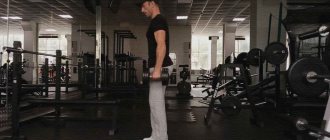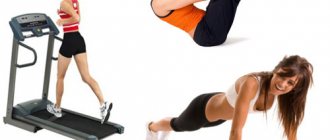Walking in place is one of the most accessible and popular physical exercises, which has virtually no contraindications. Its main advantage is the zero risk of injury and the simplest execution technique. Any beginner can master the exercise, without the help of a trainer or even Google. You can walk everywhere: at home, on the street, and in the office, right during a break. Thus, any person will be able to lead an active lifestyle, even those who have absolutely no time for the gym or morning exercises.
How many calories are burned
Let's answer the main question that interests all women who are trying to walk in place to lose weight - how many calories are burned?
On average, you will spend 250-500 kcal during an hour-long workout. The exact amount depends on the intensity of walking - the faster you move, the more energy you will spend. The recommended rhythm for beginners is 70 steps per minute. Continuing athletes should move at a speed of 90-100 steps per minute. For experienced ones, we recommend having time to take 130-150 steps, that is, practically running in place.
So we've figured out how many calories you burn when walking in place, but what if you want to increase your burn? Is there any way to increase the load?
What is more effective - regular walking or standing still?
If you compare the calorie expenditure when walking in place and walking normally, I won’t tell you the exact figure.
But I can say for sure that the calorie expenditure for walking in place is definitely greater than when you simply raise your hand with a fork on which is a fatty (like you) dumpling.
But if compared with regular walking along the street, the costs will be almost identical if the pace is approximately the same.
If you walk, for example, up a hill, the calorie expenditure will be significantly higher. If you walk in place, you are unlikely to be able to go up the hill.
If I had to choose between walking in place and walking on the street, I would rather choose walking on the street. It doesn’t look so strange and you can go out into the world, look at people, show yourself. By the way, sometimes walking can be no less effective than running, and I talked about this here.
Variations of the exercise
- Try to pick up dumbbells of 3-5 kg each. You can safely add another 150 kcal to your consumption;
- Place a small bench and simulate the ascent and descent of walking on stairs. Plus 300 kcal. Well, or you can always go out into the entrance and run up the stairs;
- You can walk in place using the interval principle - alternating a high pace with a slow one. In this case, the energy consumption of the exercise increases by 200 kcal;
- Do high knee raises. Plus 200 kcal.
How to exercise correctly
Walking in place is an exercise for home; it does not require any specific skills, exercise equipment, or special clothing. Just buy comfortable sneakers and choose a shape that makes you feel comfortable.
Before starting class, stretch your joints and muscles and do short exercises. The last meal should be no closer than 2 hours ago. The average time for one workout is 40 minutes.
- Stand straight, place your feet shoulder-width apart, bend your arms at the elbows, look forward;
- Pull your shoulders back slightly, chest open;
- At a time, lift one knee up until your thigh is parallel to the floor. The opposite elbow goes forward, the other, respectively, back;
- Place your foot on the floor on two, lift the other knee, change the position of your elbows;
- Continue with the diagram. The foot is first placed on the toe, then gently rolled onto the heel;
- The body remains straight throughout the entire “walk”.
If you are trying to perform a high hip raise, aim to touch your chest with your knee. At the same time, maintain a straight back position, that is, do not bend your body towards your knee.
Many people ask what is the benefit of walking in place with the knee raised - we will answer: this way you increase the load and additionally use the abdominal muscles.
Breathe evenly, measuredly, rhythmically. The recommended pace is to inhale and exhale on the same leg.
So, we have discussed the description of the walking exercise for home, but in order to better understand its physics, let’s list what muscles it uses.
Technique for walking on the spot at home
Many overweight people, embarrassed to go to the gym, try to use walking in place to lose weight. In order for classes to bring the desired effect, you need to walk correctly, observing the technique of performing the movements:
- Starting position: standing straight, feet shoulder-width apart, arms bent at right angles at the elbows, head looking forward.
- On the count of “one”, you need to raise one leg so that its thigh is parallel to the floor, at the same time the opposite hand goes forward, the other goes back.
- Alternatively, the leg can be raised even higher - until the knee touches the chest. In this case, the back should remain straight; you cannot tilt the body towards the knee.
- On the count of two, the working leg and arm change. The foot of the descending leg first rests on the toe and only then on the heel.
Useful video on the topic:
Walking for weight loss
Everyone is interested in whether walking in place is good for losing weight; reviews on the Internet are very mixed. We will answer you immediately and very honestly. Walking in place alone is unlikely to make your figure ideal in a short time. However, it will tone your muscles, prepare them for a higher load, and help you find the strength to go to the park on a treadmill or finally go to the gym.
To lose weight, you need to burn more calories than you consume. Accordingly, it is important to monitor your diet and lead a healthy lifestyle. Try to take at least 10,000 steps a day, and to control your counting, install any fitness app on your smartphone.
Walking in place at home will not allow you to quickly lose weight, but, with due diligence and diligence, it will definitely make you look better. The final result depends on the initial parameters, as well as on the time you spend on classes.
Try to spend every free minute exercising. For example, watching a TV series in the evening can be combined with a workout.
Who is it suitable for?
The walking in place exercise is perfect for beginner athletes who have absolutely no experience in the sports field. The load is considered gentle (about the same as Nordic walking), therefore, it is not prohibited during pregnancy, as well as in old age. Walking in place is practiced by athletes recovering from injuries who are prohibited from other types of exercise. This exercise is recommended for obese people for whom running and other types of walking are prohibited for medical reasons.
Benefits and harms
It's time to find out whether walking in place is useful and what its main advantages are!
- The exercise affects 80% of the muscles of the human body. Let only the buttocks and legs receive the main load, but the whole body is toned!
- Due to active movements, blood circulation and oxygen supply to every cell of the body improves. Vital redox processes are launched, metabolism improves;
- The cardiovascular and respiratory systems are strengthened;
- The fat burning process starts, waste and toxins are removed;
- The athlete's endurance threshold increases;
- Your mood improves and stress goes away.
Walking in place is unlikely to harm anyone. Unless you start exercising while in a state where, according to medical conditions, you can only lie down. Be careful with injuries, damage to the joints of your legs or spine, and never exercise if you feel unwell. This applies to older people, pregnant women, and ordinary young athletes who, for example, have a fever or an upset stomach.
So, we have studied the benefits and harms of walking in place, and at the end of the publication we will provide an approximate training program that is suitable for both beginners and intermediate athletes.
Running or walking?
What is healthier – running or walking?
According to experts, their effect is almost the same. Both types involve the same muscles and parts of the musculoskeletal system. But running requires more endurance and fitness. The transition from walking to running is advisable when walking has become a habit and has strengthened the body. Jogging is recommended at normal weight. Exercising with excess weight will harm your joints and heart.
What are the benefits of walking compared to running? Doctors say that an intense walk for one hour is better for your health than a 30-minute run.
Training program
For beginners, we recommend training 5-7 times a week for 40 minutes at an average pace. As soon as you feel that this load no longer forces you to work hard, move on to intensive exercises:
- For the first 10 minutes of training, walk at a speed of 80 steps per minute;
- Next, perform steps with high knees for 5 minutes;
- For the next 10 minutes, continue walking at a speed of 100-120 steps per minute;
- Again 5 minutes with high knee raises;
- 10 minutes at a speed of 70-80 steps per minute.
If you are interested in what walking in place with intervals does, we will answer, first of all, increasing the load. You will burn more calories and make your muscles work harder. Accordingly, you will achieve better results in a shorter time.
For athletes who find this load insufficient, we recommend putting a backpack with weight on your back or picking up dumbbells. Or, alternate interval walking with running in place. A scheme that has proven itself to be excellent is alternating regular steps with half-squats or going up an elevation.
Friends, walking in place is a great exercise that allows you to tone your muscles. It does not require visiting the gym, and a person learns the movements themselves at the age of one. This is the easiest and most convenient way to get yourself moving, even in extremely busy times!
How and how long to walk?
You need to start walking at home with a light load, gradually increasing the intensity of your training. For a beginner and a person with a low level of physical activity, walking 10-15 minutes a day at an average pace (about 70 steps per minute) will be enough. As soon as such a load becomes too easy, add another 5-10 minutes to the workout. Until you bring the average lesson duration to 40-60 minutes.
And also increase the pace with each lesson. The maximum without harm to the cardiovascular system is 130 steps per minute. The faster you walk, the more calories you can burn.
By the way, you shouldn’t constantly train at only one pace. A fast pace should be alternated with a slow one to restore breathing. This will not affect the effectiveness of the training.
Before training, be sure to do a short warm-up to stretch your joints. Let's move on to the correct walking technique. Starting position: legs shoulder-width apart, arms bent at the elbows and pressed to the body, back straight. Bring your knee up and then return your leg to your foot. Immediately lift your other leg and lower it to the floor as well. Continue alternating legs.
Actively work with your elbows - this will help speed up fat burning and use the whole body. And throughout the entire session, keep your back straight and your stomach tucked. Breathing should be smooth and measured. You need to inhale through your nose and exhale through your mouth. If shortness of breath occurs, slow down.
How you can further increase your calorie consumption and exercise effectiveness:
- pick up weights (dumbbells or water bottles) and walk with them;
- alternate a regular step in place with a step with a high hip lift (you need to raise your knee as high as possible while walking) - this will help burn 200 calories more;
- and the most effective option is to place a small bench in front of you and imitate moving up the stairs, alternating it with normal walking.
These methods are not suitable for beginners. But they will be effective for those who have already been walking in place for some time - since the body has adapted to these loads.
You can increase the number of steps you take per day through regular walking and climbing stairs without an elevator. This also helps to lose weight. The best option is to walk 10 thousand steps a day. In this case, it is advisable to track your daily activity with a pedometer or fitness tracker.
Interesting: A set of exercises for losing weight throughout the body











